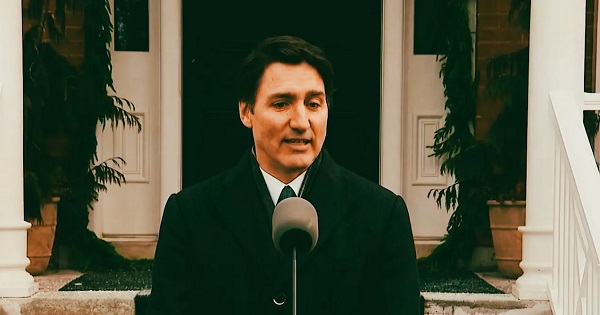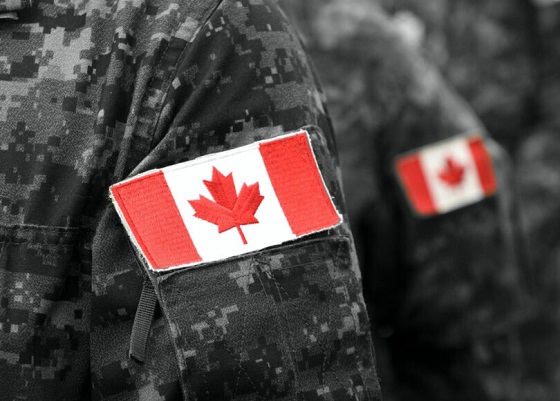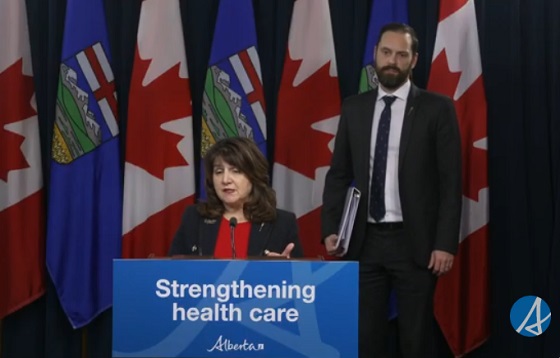National
Justin Trudeau Resigns as Prime Minister

Amid scandals, internal dissent, and economic mismanagement, Trudeau steps down after nearly a decade in power, triggering a leadership race and questions about his legacy
Justin Trudeau has finally called it quits, but let’s not pretend it was on his terms. After nearly a decade of virtue-signaling, reckless spending, and scandals so frequent they could be a Netflix series, Trudeau announced his resignation in a press conference dripping with self-pity and self-praise. But let’s cut through the melodrama: Trudeau isn’t resigning out of some noble desire to “reset” Canadian politics. He’s running for the hills, leaving behind a Liberal Party in chaos, a country divided, and a fiscal crisis that would make any economist break into a cold sweat.
To make his exit smoother—and less humiliating—Trudeau has cooked up one final trick to save his party from immediate disaster. He’s proroguing Parliament until March 24th, giving the Liberals time to select a new leader while avoiding a vote of no confidence that every opposition leader is salivating over. The Conservatives, NDP, and Bloc are all chomping at the bit to hold Trudeau’s government accountable for its incompetence, scandals, and economic mismanagement. And who can blame them? The Liberal government has been teetering on the edge of collapse for months, paralyzed not by opposition obstruction, as Trudeau claims, but by its own refusal to release critical documents on multiple corruption scandals. Trudeau’s prorogation stunt isn’t about giving Canada a “fresh start”—it’s about running out the clock to save his party from political obliteration.
According to Trudeau, he’s stepping down because Parliament has been “paralyzed” by polarization. That’s rich. The truth is, Parliament hasn’t been paralyzed by some abstract cultural divide. It’s been paralyzed by Trudeau’s government refusing to release critical documents about scandal after scandal. Whether it’s the “Green Slush Fund,” where taxpayer dollars were funneled to companies tied to Liberal insiders, or the endless dodging around the Auditor General’s damning reports, Trudeau’s government has been allergic to accountability. Opposition parties haven’t obstructed Parliament—they’ve been doing their job, demanding transparency. But Trudeau, ever the master deflector, wants you to believe it’s all just partisan bickering.
And let’s not forget the real catalyst for this resignation: Chrystia Freeland’s departure. Trudeau would have you think they parted on amicable terms, with him heaping praise on her as a “political partner.” The reality? Freeland’s resignation letter all but called him out for fiscal irresponsibility. She didn’t leave because of some grand philosophical difference with Trudeau. She bailed because she was left holding the bag for his government’s staggering $64 billion overspending scandal.
Freeland, as Finance Minister, was supposed to break the bad news to Canadians, delivering the grim truth about how the Trudeau government had torched billions on pet projects, virtue-signaling initiatives, and bloated programs under the guise of “building back better.” But when she got wind that Mark Carney—the darling of the globalist elite—was being tapped as her eventual replacement, her calculus shifted. Why should she be Trudeau’s scapegoat, taking the fall for his disastrous economic management, when she could jump ship and salvage her political reputation?
So, she bolted, leaving Trudeau scrambling to spin her departure as amicable, even noble. The truth is far less flattering. Freeland wasn’t some hero standing up to Trudeau’s fiscal insanity; she was an opportunist who saw the writing on the wall and decided to save herself. Her timing says it all. Trudeau was ready to throw her under the bus, make her the face of his government’s economic collapse, and Freeland, ever the political survivor, wasn’t about to go down with the ship.
In the end, Trudeau and Freeland are two sides of the same coin. One ran Canada’s economy into the ground while insisting it was all for the greater good, and the other bailed the moment she saw an opportunity to escape the consequences. Trudeau’s resignation and Freeland’s exit don’t mark the end of an era—they mark the unraveling of a failed administration that has left Canada worse off than it was a decade ago.
But it doesn’t end there because Justin Trudeau’s resignation wasn’t just an end to his tenure—it was a ghost story. Lurking in the background of his carefully choreographed farewell was the unmistakable shadow of Stephen Harper, the former Conservative Prime Minister Trudeau loved to blame for just about everything. Even as he stepped down, Trudeau couldn’t resist invoking the specter of his political nemesis, indirectly justifying his decision to prorogue Parliament by comparing it to Harper’s 2008 decision to do the same.
Trudeau attempted to spin his prorogation as necessary, claiming Parliament had been paralyzed by obstruction and filibustering. But anyone paying attention knows that Trudeau’s move was about avoiding immediate accountability. Facing confidence votes in a chaotic minority government, with scandals piling up and his party splintering, Trudeau needed an out. And who better to use as cover than Harper, the so-called architect of prorogation?
But here’s the irony Trudeau can’t escape: while he used to condemn Harper’s leadership style as cynical and divisive, his own legacy isn’t much different. Harper prorogued Parliament to avoid a confidence vote he was likely to lose, a move that Trudeau’s Liberals once decried as undemocratic. Yet here we are, with Trudeau proroguing Parliament not to “reset” anything, but to buy his party time to regroup while avoiding a vote that could collapse his government.
Trudeau’s comparisons to Harper don’t stop there. Harper governed during a time of economic challenge and left behind a reputation for fiscal conservatism. Trudeau, on the other hand, presided over the largest spending spree in Canadian history, resulting in ballooning deficits and rising inflation. But as Trudeau exits, what’s striking isn’t how different he is from Harper—it’s how much he’s been defined by him. Harper’s economic competence looms large over Trudeau’s fiscal recklessness. The ghost of Harper isn’t just haunting Trudeau’s resignation—it’s casting a long shadow over his legacy.
Even in his final moments as Prime Minister, Trudeau’s insecurities about Harper were on full display. By proroguing Parliament and framing his exit as a principled move to “cool tensions,” Trudeau essentially admitted he couldn’t handle the same parliamentary pressures Harper navigated with ease. In the end, Trudeau wasn’t escaping Harper’s legacy; he was living in it. His inability to outrun that ghost may be one of the most revealing aspects of his resignation.
The sad part here folks is that Trudeau’s press conference wasn’t just self-serving—it was a masterpiece of revisionist history. He bragged about reducing poverty and helping families, but here’s what he left out: food bank visits in Canada hit over 2 million in March 2024, a 90% increase since 2019. Housing costs are through the roof, inflation is crushing families, and his beloved carbon tax has made basic necessities even more expensive. Sure, he’ll point to child poverty stats that improved thanks to government handouts, but the broader picture shows a nation where economic insecurity is the new normal. That’s not a success story—it’s a disaster.
And then there was the inevitable swipe at Pierre Poilievre, the Conservative leader who’s been eating Trudeau’s lunch on the political stage. Trudeau called Poilievre’s vision “wrongheaded” and accused him of wanting to abandon climate change initiatives and attack journalists. Translation: Poilievre has been relentless in exposing Trudeau’s failures, and Trudeau doesn’t like it. Canadians don’t care about your climate summits and woke talking points, Justin—they care about being able to afford groceries and pay their rent. That’s why Poilievre is surging, and why Trudeau is getting out before he faces electoral humiliation.
Of course, Trudeau tried to paint his departure as some grand act of self-awareness. He claimed, “If I’m having to fight internal battles, I cannot be the best option in the next election.” How noble! Except those “internal battles” are the direct result of his own arrogance and incompetence. His party is in shambles, his government is mired in scandal, and he knows he can’t beat Poilievre. This isn’t a gracious exit—it’s a calculated retreat.
So what’s next for Canada? Justin Trudeau’s resignation sets the stage for a Liberal leadership race that will be as chaotic and cynical as his entire tenure. Whoever steps up will inherit not just a fractured party, but a country battered by division, corruption, and fiscal mismanagement. The swamp Trudeau cultivated—the elites, insiders, and bureaucrats who thrived under his reckless governance—will scramble to maintain control, ensuring their grip on power even as Canadians demand real change. But this time, the people might not be so easily fooled.
Pierre Poilievre and the Conservatives are ready to step in with a message that cuts through the noise: affordability, accountability, and putting Canadians first. They’re tapping into the frustration of a country that’s tired of being lectured by a Prime Minister who spent more time virtue-signaling on the world stage than solving the real issues facing Canadians at home. Families struggling to pay for groceries, veterans waiting for basic services, and Indigenous communities still boiling water don’t want more of the same—they want a government that works for them. Trudeau saw the writing on the wall, and he ran.
Justin Trudeau leaves office cloaked in the same smug self-congratulation that defined his years in power. He’ll undoubtedly retreat to cozy speaking circuits and elite gatherings, spinning his tenure as a tale of progress and leadership. But Canadians won’t forget. They won’t forget the skyrocketing cost of living, the erosion of free speech, the scandals swept under the rug, or the divide-and-conquer tactics he used to cling to power. Trudeau governed not for the people, but for the swamp—a cadre of insiders, globalists, and bureaucratic elites who put their interests above those of ordinary Canadians.
This resignation isn’t a reset—it’s a retreat. Trudeau knows the Liberals can’t win under his leadership, so he’s abandoning ship, leaving the mess for someone else to clean up. But the Canadian people are waking up. They see through the empty promises and self-serving platitudes. They’re ready to drain the swamp and restore a government that respects their values, their freedom, and their future.
Trudeau’s resignation isn’t the end of a chapter; it’s the start of a fight. The fight to reclaim Canada from the grasp of a corrupt and unaccountable elite. The fight to put the interests of hardworking Canadians ahead of the woke agenda. The fight to restore pride, prosperity, and unity in a country that deserves so much better than the mess Justin Trudeau is leaving behind. Canada is ready for real leadership. And the swamp should be very, very afraid.
Subscribe to The Opposition with Dan Knight .
For the full experience, upgrade your subscription.
Carbon Tax
Canadian energy policies undermine a century of North American integration

Energy trade with the U.S. alone is over C$80 billion more than all merchandise trade between Canada and China
Canada’s energy sector is a cornerstone of North American prosperity, but a number of federal policies have weakened its foundation over the past decade, observes a new MEI publication released this morning.
“For a century, this North American energy machine kept churning, irrespective of political winds and to the betterment of everyone on both sides of the 49th parallel,” says Taylor MacPherson, associate researcher at the MEI and author of the report. “But we can’t take it for granted; we must be steadfast in protecting this unique, mutually beneficial relationship.”
Canada is the world’s fourth-largest oil producer, fifth-largest natural gas producer, and third-largest hydroelectric generator.
Canadian exports of hydrocarbons—commodities such as crude oil, natural gas, natural gas liquids, and refined petroleum—to the United States alone totalled C$169.8 billion in 2024. This represents 22 per cent of all goods Canada exported that year.
Canada imported C$33.4 billion in U.S. hydrocarbons, representing 4 per cent of all goods imports.
“This partnership is a genuine two-way lifeline,” said Mr. MacPherson. “In the winter, U.S. gas backs up Ontario during the frigid months, while Canadian gas feeds Californian power plants in the summer, so neither country is exposed to excessive price shocks.”
The two nations have complementary market structures: for instance, Canada produces heavy crude ideal for America’s complex refineries. In the meantime, U.S. shale fields produce light oil that eastern Canadian refineries can use.
Two-way energy trade stands at over C$200 billion annually, equalling 13 per cent of all Canadian merchandise trade. This is larger than Canada’s entire two-way merchandise trade with China in 2024, which stood at C$118.7 billion.
The energy sector accounts for 10.3 per cent of Canada’s GDP in 2023 and 3.4 per cent of employment, totalling 697,000 jobs.
Employment in the sector is among the best paid in the country, with average annual compensation in oil and gas reaching roughly C$200,000, compared to just over C$75,000 across all industries.
Total contributions to government coffers from the industry are substantial, with tens of billions of dollars collected in 2024-2025, including close to C$22 billion by Alberta alone.
“This is not just money on a spreadsheet,” says Mr. MacPherson. “It is what funds our schools, our hospitals, and the services Canadians rely on. The government risks weakening our communities with its recent actions.”
Recent legislation has made the development of the energy sector increasingly difficult, which risks undermining this integration, to everyone’s detriment.
In 2019, the Impact Assessment Act replaced earlier legislation, and uncertainty created by its adoption has been reported to be a contributor to the drop in Canadian investment.
Another emerging threat has been the federal government’s proposed oil and gas emissions cap. If Ottawa were to remove it, as has been suggested, it would be removing what has long been perceived as a production cap by the industry.
Canada’s 2019 Oil Tanker Moratorium Act bans large crude and “persistent” oil tankers from B.C.’s north coast, effectively shutting the door on any major export terminal at Prince Rupert, Kitimat, or nearby ports.
“North American energy integration is a marvel of pipelines and power lines,” says Mr. MacPherson. “A confluence of harmful legislation risks toppling Canada as an energy leader, and will leave us a far cry from becoming the ‘energy superpower’ promised by Prime Minister Carney.”
You can read the Economic Note here.
* * *
The MEI is an independent public policy think tank with offices in Montreal, Ottawa, and Calgary. Through its publications, media appearances, and advisory services to policymakers, the MEI stimulates public policy debate and reforms based on sound economics and entrepreneurship.
armed forces
Carney’s ‘Shared Sacrifice’ Is a Lie. Only Veterans Are Bleeding for This Budget

How the 2025 Federal Budget Demands More From Those Who’ve Already Given Everything
I’ve lived the word sacrifice.
Not the political kind that comes in speeches and press releases the real kind. The kind Mark Carney wouldn’t know if it slapped him in the face. The kind that costs sleep, sanity, blood. I’ve watched friends trade comfort for duty, and I’ve watched some of them leave in body bags while the rest of us carried the weight of their absence. So when the Prime Minister stood up this year and told Canadians the new budget would “require sacrifice,” I felt that familiar tightening in the gut the one every veteran knows. You brace for impact. You hope the pain lands in a place that makes sense.
It didn’t.
Kelsi Sheren is a reader-supported publication.
To receive new posts and support my work, consider becoming a free or paid subscriber.
Six months into Mark Carney’s limp imitation of leadership, it’s painfully clear who’s actually paying the bill. The 2025 budget somehow managing to bleed the country dry while still projecting a $78-billion deficit shields the political class, funnels money toward his network of insiders, and then quietly hacks away at the one department that should be sacrosanct: Veterans Affairs Canada.
If there’s one group that’s earned the right to be spared from government-imposed scarcity, it’s the people who carried this country’s flag into danger. Veterans don’t “symbolize” sacrifice they embody it on the daily And when Ottawa tightens the belt on VAC, the consequences aren’t abstract. They’re brutal and direct, causing nothing but more death and destruction. But Mark Carney doesn’t lose sleep over veterans killing themselves.
Punishment disguised as budgeting for a veteran means the difference between keeping a roof or sleeping in a truck. Punishment disguised as budgeting means PTSD left untreated until it turns a human being into another suicide statistic. Punishment disguised as budgeting means a veteran choosing between groceries and medication because some number-shuffler in Ottawa wants to pretend they’re being “responsible.”
This isn’t fiscal restraint it’s political betrayal wrapped in government stationery. Ottawa sells it as hard choices, but the hardness always falls on the backs of the same people: the ones who already paid more than their share, the ones who can’t afford another hit. Carney and his cabinet won’t feel a thing. Not one missed meal. Not one sleepless night. Not one flashback.
But the men and women who already paid in flesh? They’re the ones being told to give more.
That’s not sacrifice.
That’s abandonment dressed up as fiscal policy.
And Canadians need to recognize it for what it is a government that demands loyalty while refusing to give any in return. The fine print in the government’s own documents reveals what the slogans won’t.
Over the next two years, VAC plans to cut $2.227 billion from its “Benefits, Services and Support” programs. [2] Broader “savings initiatives” reach $4.4 billion over four years, much of it through reductions to the medical-cannabis program that thousands of veterans rely on to manage chronic pain and PTSD. [3] Independent analysts estimate yearly losses of roughly $900 million once the cuts are fully implemented. [4]
To put that in perspective: no other department is seeing reductions on this scale. Not Defence, not Infrastructure, not the Prime Minister’s Office thats for damn sure. Only the people who’ve already paid their debt to this country are being asked to give again.
The government’s line is tidy: “We’re not cutting services we’re modernizing. Artificial Intelligence will streamline processing and improve efficiency.”
That sounds fine until you read the departmental notes. The “modernization” translates into fewer human case managers, longer waits, and narrower eligibility. It’s austerity dressed up as innovation. I’ve coached veterans through the system. They don’t need algorithms; they need advocates who understand trauma, identity loss, and the grind of reintegration. They need empathy, not automation.
This isn’t abstract accounting. Behind every dollar is a life on the edge, the human cost and toll is very real.
- Homelessness: Veterans make up a disproportionate number of Canada’s homeless population. Cutting benefits only deepens that crisis.
- Mental Health: Parliament’s ongoing study on veteran suicide shows rising rates of despair linked to delays and denials in VAC services. [5] Knowing MAID for mental illness alone in 2027 will take out a significant amount of us.
- Food Insecurity: A 2024 VAC survey found nearly one in four veterans reported struggling to afford basic groceries. That’s before these cuts.
We talk about “service” like it ends with deployment. It doesn’t. Service continues in how a nation cares for those who carried its battles, and this doesn’t include the cannabis cut to medication or the fight’s we have to fight when they tell us our injuries are “not service related”
The insult is magnified by the timing. These cuts were announced just days before November 11 Remembrance Day, when Canadians bow their heads and say, “We will remember them.”
Apparently, the government remembered to draft the talking points but forgot the meaning behind them, not a single one of the liberal government should have been allowed to show their faces to veteran’s or at a ceremony. They’re nothing but liars, grifters and traitors to this nation. Yes I’m talking about Jill McKnight and Mark Carney.
The budget still runs the second-largest deficit in Canadian history. [6]
Veteran cuts don’t fix that. They barely dent it. What they do is let the government say it’s “finding efficiencies” while avoiding the real structural overspending that created the problem in the first place. When a government chooses to protect its pet projects and insider contracts while pulling support from veterans, that’s not fiscal discipline it’s moral cowardice. The worst part is that This isn’t an isolated move. It fits a six-month pattern: large, attention-grabbing announcements about “reform,” followed by fine print that concentrates power and shifts burden downward. Veterans just happen to be the first visible casualty.
The same budget expands spending in other politically convenient areas green-transition subsidies, digital-governance infrastructure, and administration while the people who once embodied service are told to tighten their belts.
As a combat veteran, I know what it’s like to come home and realize that the fight didn’t end overseas it just changed terrain. We fought for freedom abroad only to watch bureaucratic neglect wage a quieter war here at home. Veterans don’t ask for privilege. They ask for respect, for competence, for follow-through on the promises this country made when it sent them into harm’s way.
Here’s what really needs to change, the liberal government has to go, thats step one. Restore VAC funding immediately. Any “savings” plan that touches benefits, services, or support should be scrapped. End the AI façade. Efficiency can’t replace empathy. Keep human case workers who understand the veteran experience. Audit and transparency. Publish a detailed breakdown of where VAC funds are cut and who approved it. Canadians deserve to see the receipts. National accountability. Every MP who voted for this budget should face veterans in their constituency and explain it, face-to-face.
Budgets are moral documents. They show what a country values. By slashing VAC while running record deficits, this government declared that veterans are expendable line items, not national obligations. The Prime Minister promised “shared sacrifice.” But the only people truly sacrificing are the ones who already gave more than most Canadians ever will.
Sacrifice isn’t about spreadsheets; it’s about service. It’s what every veteran understood when they raised their right hand. This government’s brand of sacrifice asking wounded soldiers to pay for political mismanagement isn’t austerity. It’s abandonment.
Canada owes its veterans more than a wreath once a year. It owes them respect written into every budget, not erased from it.
KELSI SHEREN
Footnotes
[1] The Guardian, “Canada’s 2025 Federal Budget Adds Tens of Billions to Deficit as Carney Spends to Dampen Tariffs Effect,” Nov 5 2025.
[2] True North Wire, “Liberal Budget to Cut $4.23 Billion from Veterans Affairs,” Nov 2025.
[3] StratCann, “Budget 2025 Includes Goal of Saving $4.4 Billion in Medical Cannabis Benefits,” Nov 2025.
[4] Canadian Centre for Policy Alternatives, “Where Will the Federal Government Cut to Pay for Military Spending and Tax Cuts?” Nov 2025.
[5] House of Commons Standing Committee on Veterans Affairs, “Study on Veteran Suicide and Sanctuary Trauma,” ongoing 2025.
[6] CBC News, “Federal Budget 2025 Deficit Second Largest in Canadian History,” Nov 2025.
Kelsi Sheren is a reader-supported publication.
To receive new posts and support my work, consider becoming a free or paid subscriber.
-

 Agriculture22 hours ago
Agriculture22 hours agoHealth Canada indefinitely pauses plan to sell unlabeled cloned meat after massive public backlash
-

 COVID-191 day ago
COVID-191 day agoCrown seeks to punish peaceful protestor Chris Barber by confiscating his family work truck “Big Red”
-

 MAiD2 days ago
MAiD2 days agoHealth Canada suggests MAiD expansion by pre-approving ‘advance requests’
-

 Indigenous1 day ago
Indigenous1 day agoCanadian mayor promises to ‘vigorously defend’ property owners against aboriginal land grab
-

 Alberta2 days ago
Alberta2 days agoPremier Danielle Smith says attacks on Alberta’s pro-family laws ‘show we’ve succeeded in a lot of ways’
-

 Crime20 hours ago
Crime20 hours agoB.C.’s First Money-Laundering Sentence in a Decade Exposes Gaps in Global Hub for Chinese Drug Cash
-

 Health2 days ago
Health2 days agoOrgan donation industry’s redefinitions of death threaten living people
-

 Daily Caller2 days ago
Daily Caller2 days agoEXCLUSIVE: Here’s An Inside Look At The UN’s Disastrous Climate Conference








